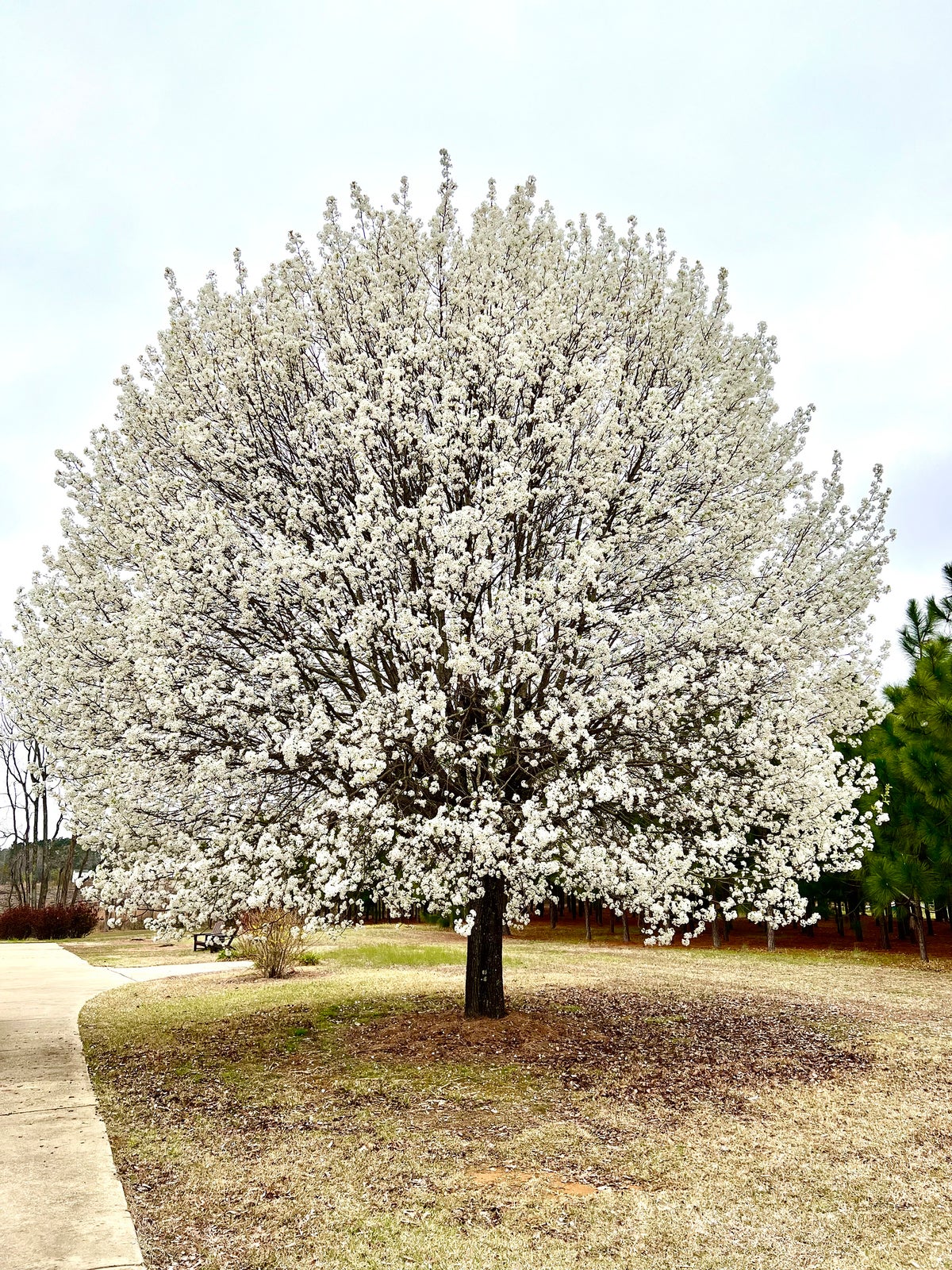
It's the late 1940s. World War II has ended, the Baby Boom is in full swing, and incomes are rising, making first-time homeownership possible for many. Cars are being marketed to the masses, so folks can travel farther to work. The post-war expansion of American suburbia has begun.
Over the next 50 years, cookie-cutter homes on quiet, tree-lined streets become the epitome of success for those looking to escape crowded cities across America.
And the Callery pear, a non-native tree species introduced from Asia in the early 1900s, is often chosen to line those streets.
If you, too, have chosen the tree for your property, or inherited it from previous owners, you may now find yourself battling to control and maintain it.
Indeed, removal is difficult. But it is possible -- if performed in a very specific manner. And for those considering a new planting, there are plenty of suitable replacements.
Favored for its fast growth, tight habit, glossy leaves, beautiful white spring flowers, striking fall foliage and stress tolerance, the initially sterile “Bradford” cultivar was the darling of developers across much of the eastern, central and southern United States. When its weak branch structure was recognized as problematic, other, somewhat stronger cultivars, like “Cleveland Select” and “Aristocrat” were bred.
But there were other problems, not fully recognized until decades later when the different cultivars cross-pollinated and began producing fruit and dropping seeds.
First, there was the smell emanating from those beautiful, white spring blossoms, which can only be described as essence of putrefied fish. And residents would have to spend precious leisure time cleaning up slimy, rotted fruit from sidewalks and pulling up “babies,” saplings that spread and formed dense stands with reckless abandon.
The Callery pear tree’s pretty, upward-facing branch structure meant limbs would rip and fly off during storms, threatening to injure people and damage cars and homes.
Eventually, the unintended consequences of America’s most popular street tree became untenable.
By the 1990s, the trees had “escaped” to roadsides and other natural areas, especially in eastern and southern states, their seeds carried by birds.
Today, the Callery pear is listed as an invasive species in several states. In January, Ohio became the first to enact a ban on the tree, with Pennsylvania and South Carolina following suit. Several other states and municipalities are considering similar measures.
Controlling Callery pears is difficult because their sturdy, extensive root system makes the trees almost impossible to kill with herbicides. It’s best to dig them out, but you must remove every last bit of the root system or it may send up new suckers for years to come.
If you’re not ready to part with your tree, stay on top of it by removing suckers regularly. Cut them off the base of the trunk, just below the soil line, in spring when they first sprout. Launch another search-and-destroy mission in mid-summer to remove new suckers.
Inspect the rest of your property for saplings, which can pop up far from trees after wildlife spreads their seeds.
For alternative plantings, there are plenty of beautiful, native tree species that offer the same appeal as the Callery pear.
Great substitutes, without the headache, include American hornbeam (Carpinus caroliniana), American plum (Prunus americana), American yellowwood (Cladrastis kentukea), chalk maple (Acer luecoderme), chokecherry (Prunus virginiana), dogwood (Cornus florida), Eastern redbud (Cercis canadensis), fringe tree (Chionanthus virginicus), hawthorn (Crataegus), ironwood (Ostrya virginiana) and serviceberry (Amelanchier).
___
Jessica Damiano writes regular gardening columns for The Associated Press. She publishes the award-winning Weekly Dirt Newsletter. Sign up here for weekly gardening tips and advice.







